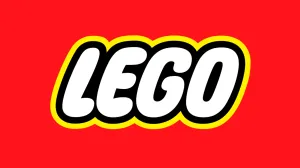TKO Studios released its third wave of complete comic book miniseries in November, including the sci-fi action title The Pull from writer Steve Orlando, artist Ricardo López Ortiz, and color artist Triona Farrell. After scoring an Eisner nomination with its previous sci-fi release, the excellent space survival story Sentient, expectations are high for TKO’s next foray into the genre. The Pull could hardly be more different from its predecessor in terms of style and tone. With kinetic action, expressive visuals, and the philosophical underpinnings of Anthropocene-era dread, it still proves to be another knockout from the relatively young publisher.
Videos by ComicBook.com
The Pull follows Brenton Demm, one of the Horizon’s thirteen heroes empowered by the newly discovered energy source called marbleite. For a time, it seems like humanity is on the cusp of a new age. Then a scientist, who happens to be Demm’s lover, Gayano Tith, discovers that the energy marbleite releases has attracted the attention of a cosmic being called the Undoer that will assuredly end all existence on Earth. Confronted with this dread data, and fueled by jealousy, Gayano’s father, Maximo, attempts to lead a doomsday cult in the act of mass suicide. Demm, determined to play hero, rushes in to stop Maximo but accidentally sets off the cult’s destructive device. Demm survives but is traumatized by the experience, and Gayano leaves him. One year later, Earth has six days left before the Undoer ends everything. Demm is a mess, but Gayano returns with a desperate last-ditch attempt to save the future if Demm is up to the task.

What follows is a discourse on how we go on living and forging a future during dark days such as these, presented through a fast-paced, action-heavy sci-fi story. The style and tone of the series appear heavily inspired by shonen manga. Ortez makes liberal use of speed lines, crackling energy, and wildly expressive facial features that characterize the genre. Orlando writes Demm in the mold of the bitter, aggressive rival, à la Vegeta or Bakugo. But for Demm, the only person he’s competing with is himself.
As a plot device, marbleite mirrors our real-world dependence on fossil fuels. The Undoer is a physical manifestation of the existential dread many of us feel as our society refuses to deal with the consequences of that dependency. Each of The Pull‘s issues begins in a flashback that ends with the manifestation of the Undoer’s visage—scrawled on the wall of a cult compound or written in the stars. It’s a brilliant expression of how that dread the Undoer represents insinuates itself into everyday life, looming large over humanity’s inability to reckon with it.
The characters in the story put a face to the many ways we fail to deal with our situation. Some succumb to nihilism, while others live in denial. There is profit-motivated corporate research and banal bureaucracy. Some will find a solution at any cost, losing sight of the reasons why, while others focus on living the best life they can with their remaining time. One might choose to lessen our never-ending anxiety with stories to help us forget. But all people, even those with the noblest intentions to save the future, never bother consulting with those that will have to live in it.
The Pull is a story that rages against the impending darkness and encourages us to find a way to make our time matter. It’s punctuated with Ortez’s visceral fight scenes, Akira-like mass destruction, and the post-modern unraveling of reality, each imbued with Farrell’s palette of cyberpunk grime and neo-noir pinks and purples. It’s a cathartic story, tense on the one hand, yet reassuring to know that someone else feels that same tension. And it’s a reminder that it’s not too late to forge a new future, even it means tearing apart the present. The Pull is an intense sci-fi story that’s relevant, thrilling, visually arresting, and almost impossible to put down even after the final page is turned.
Rating: 5 out of 5
Published by TKO Studios
Written by Steve Orlando
Art by Ricardo López Ortiz
Colors by Triona Farrell
Letters by Thomas Mauer








